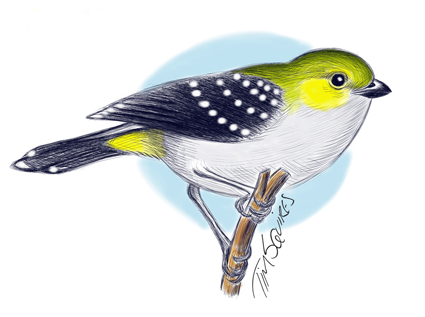 The Tasmanian culture of the shack is taking on a new meaning on Bruny Island– it’s being extended to the holiday island’s population of forty-spotted pardalotes.
The Tasmanian culture of the shack is taking on a new meaning on Bruny Island– it’s being extended to the holiday island’s population of forty-spotted pardalotes.
Bruny residents of the non-feathered kind are being asked to support a scheme to supply the endangered birds with nest-box homes to see them through the breeding season.
The program is being co-ordinated by a researcher who has joined the fight to halt the catastrophic decline of the Tasmanian endemic species which is seeing it heading towards extinction.
Numbers of forty-spotted pardalotes have been in freefall in recent years, dropping by about 60 per cent, and the total population now stands at between 1200 and 1500 birds.
The reasons specific bird species come under threat are often complex and far-reaching. These can extend beyond what might appear obvious causes, in the forty-spots’ case a lack of nesting hollows for these tree-cavity nesters and drought having an impact on their favoured white gums.
The researcher heading the project, Amanda Edworthy, a PhD student from Australian National University, says that providing nest boxes for the pardalotes will not only provide them with suitable nesting sites but also allow her to study other possible causes of the decline.
She visited BrunyIsland this summer for the first of three field seasons to assess forty-spot breeding requirements, and threats. She is also studying the beautiful little birds – which are among Australia’s smallest at only nine centimetres in length – on not just Bruny but two other remaining nesting sites, one just over the water from Bruny on the Tinderbox Peninsula and on Maria Island.
One discovery she has made already is that this summer more than half of the forty-spot nestlings were eaten by predators or killed by screw-worm fly parasites.
“Populations also seem to be fragmented and potentially suffer from inbreeding,” she told me. “I’m hoping to sort out the relative impact of each of these threats with another two years of fieldwork, laboratory work, and data analysis.”
Ms Edworthy is originally from Canada. He came to Australia to study birds because, as she puts it, “there’s a great diversity of species and lots of work to do on them”. She conducted her master’s research in Canada on a long-term project involving tree hollows used by birds and mammals in British Columbia.
In her latest experiment she says she not only gets to monitor the possibilities and benefits of providing nest boxes in forests but to assess the impact predators and parasitic flies are having on forty-spot breeding success.
Ms Edworthy says a similar fly is causing decline in populations of Darwin’s finches on the Galapagos Islands, and are generally on the increase in South America due to warmer temperatures.
As a vital component of Ms Edworthy’s project, the Bruny Island Men’s Shed has been commissioned to construct an initial 100 nesting boxes, with 200 being the ideal number if funds can be raised for the project.
The Bruny Island Environment Network is inviting sponsors to pay $25 per box and I have already signed up for mine.
I’ve long envied those of my friends who announce during the hot summer months they are taking off to the shack.
Now I can declare I’m a shack owner myself, even if the modest home in question has squatters.
* Details on nestbox sponsorship can be obtained from the Bruny Island Environment Network, bien.network@gmail.com